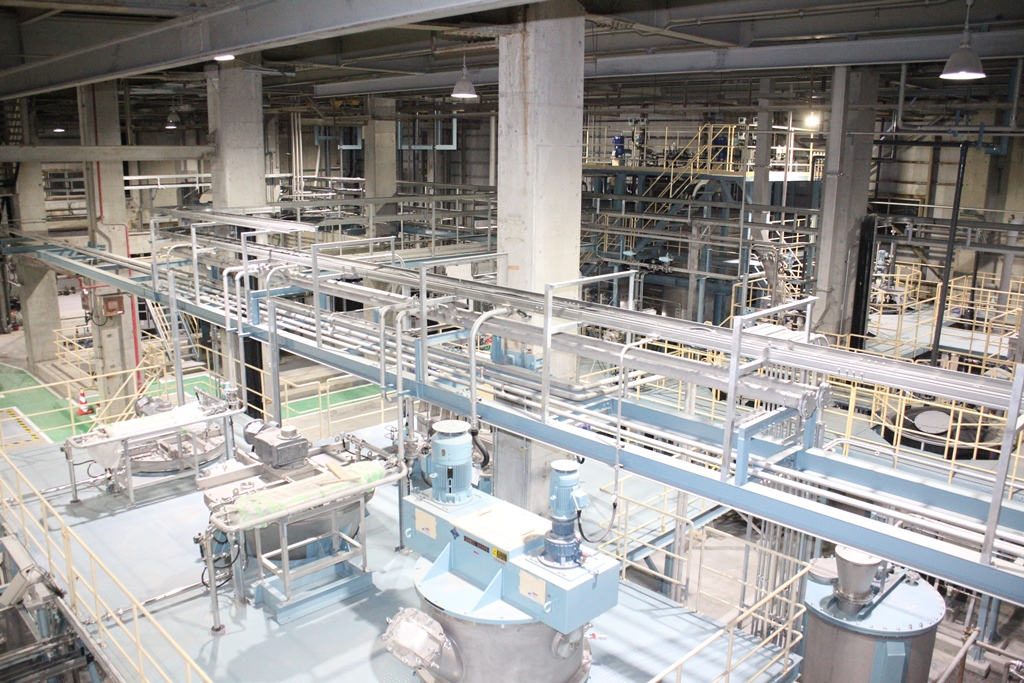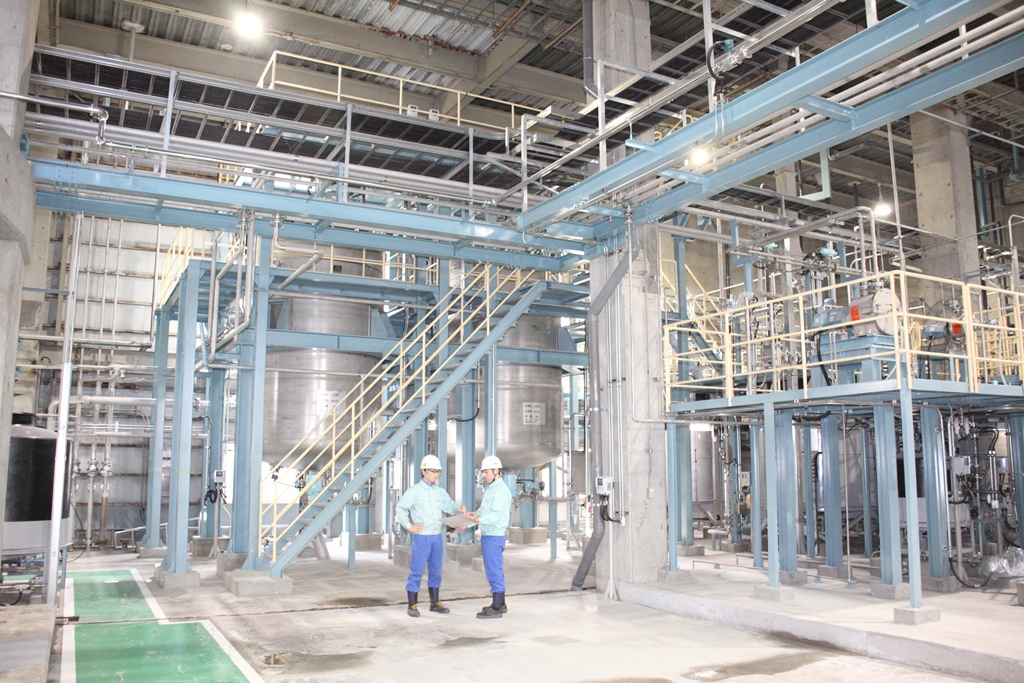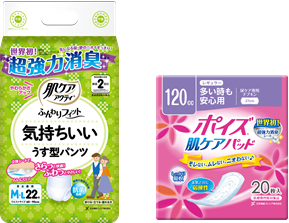Press ReleasesNippon Paper Industries Operates the World's Largest Cellulose Nanofiber Production Facility at the Ishinomaki MillAnnual Production Capacity of 500 Tons, Accelerates Development of a Wide Variety of Industrial Applications
Nippon Paper Industries Co., Ltd.
Nippon Paper Industries Co., Ltd. (President: Fumio Manoshiro; hereinafter "Nippon Paper Industries") announces the completion of a large-scale cellulose nanofiber (CNF) production facility at the Ishinomaki Mill (Ishinomaki City, Miyagi).


The large-scale CNF production facility at the Ishinomaki Mill
The large-scale CNF production facility at the Ishinomaki Mill is able to produce CNF that is completely nano-dispersed with uniform fiber widths of 3 to 4 nm from wood pulp that is chemically treated by TEMPO catalytic oxidation method (see Note 1). TEMPO-oxidized CNF is characterized by its transparency and has possibility of the addition of various functions. Based on the basic research and development undertaken in the "Nanotech Advanced Component Utilization Research and Development" project (for 2007 to 2012) of the New Energy and Industrial Technology Development Organization (NEDO), Nippon Paper Industries has been developing technologies with demonstration facility for production installed at the Iwakuni Mill (Iwakuni City, Yamaguchi) in 2013. In 2015, the CNF sheet that was produced by adding antibacterial and deodorizing functions to TEMPO-oxidized CNF for the first time in the world was used in the commercialization of adult diapers called "Hada Care Acty" by Nippon Paper Crecia Co., Ltd. (President: Yasunori Nanri), a group company of Nippon Paper Industries. At present, the CNF sheet with antibacterial and deodorizing functions is also used in a range of skin care products such as light incontinence pads called "Poise" by Nippon Paper Crecia Co., Ltd. 
Products of Nippon Paper Crecia Co., Ltd. using a sheet with antibacterial and deodorizing effects
that is produced by putting TEMPO-oxidized CNF into practical use.
(Left:"Hada Care Acty" series, Right:"Poise" series)
TEMPO-oxidized CNF is expected to be put into practical use for a wide variety of industrial applications, such as functional additives and nano-composite materials in addition to functional sheets. As the operation of the large-scale production facility at the Ishinomaki Mill has commenced, Nippon Paper Industries will accelerate the commercialization process.
In addition, following the Ishinomaki Mill, this year Nippon Paper Industries will launch the operation of a demonstration facility for the production of CNF reinforced resin (see Note 2) at the Fuji Mill (Fuji City, Shizuoka) in June and the operation of a large-scale production facility of CNF that is to be put into practical use as food and cosmetics additives (see Note 3) at the Gotsu Mill (Gotsu City, Shimane) in September. As a comprehensive biomass company shaping the future with trees, Nippon Paper Industries will instantly establish the manufacturing technologies of CNF suitable for various applications and the system for commercial supply , and create the markets for new materials and CNF.
Moreover, the Ishinomaki Mill commenced the operation of the production facility of "CfFA" (Carbon-free Fly Ash), modified fly ash by burning process, in December 2015 in addition to the production of printing/business communication paper, which marked the start of the recycling business. The electric power generation facility using mixed fuel of coal and biomass are now under construction, and are scheduled to commence operation in March 2018. The commencement of the operation of the large-scale production facility as the basis for the production of CNF should further strengthen the foundation as the core mill of Nippon Paper Industries. We will contribute to better living and cultural progress in the future.
(Note 1) A chemical denaturation method for cellulose by TEMPO catalysis, developed by Professor Akira Isogai et al of the Department of Biomaterial Sciences, Graduate School of Agricultural and Life Sciences at The University of Tokyo. Using this method pulp is easily defibrated, and it is possible to obtain nanofiber with uniform width.
(Note 2) CNF reinforced resin is produced by mixing CNF into resin, such as polypropylene (PP), polyethylene (PE), nylon and other resin, resulting in additional strength.
(Note 3) Microfibril cellulose with a fiber width of several to dozens of nanometers produced from wood pulp that is chemically modified by using the manufacturing technology of carboxymethyl cellulose (CMC) that is already sold as food additives.